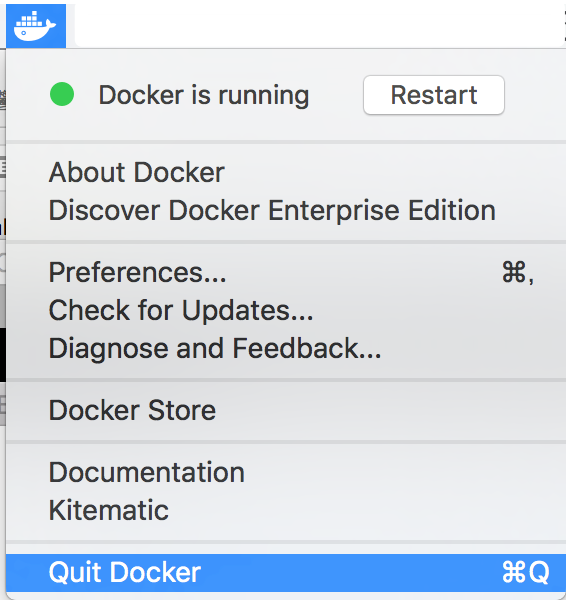Docker Mac Latest Gcc Libraries
- Docker Install Gcc
- Docker Mac Latest Gcc Libraries List
- Docker Mac Latest Gcc Libraries Download
- Docker Mac Latest Gcc Libraries 2017
Overview
Learn to set up a Docker data science environment using Docker containers and the popular Jupyter Notebook in this free tutorial. You should be able to run your own local Jupyter server with the latest data science libraries. An example of using Windows in a virtual machine on a mac. Docker Desktop. The preferred choice for millions of developers that are building containerized apps. Docker Desktop is a tool for MacOS and Windows machines for the building and sharing of containerized applications and microservices. Access Docker Desktop and follow the guided onboarding to build your first containerized application in minutes.
- How to install the gcc compiler on a mac Hi, I was just wondering, I have been learning c on a mac and I have no way to compile my code. I need to know how to install gcc on my MacBook.
- Docker Hub is the world’s largest repository of container images with an array of content sources including container community developers, open source projects and independent software vendors (ISV) building and distributing their code in containers. Users get access to free public repositories for storing and sharing images or can choose.
- Installing a GCC compiler onto a Docker image. My answer starts by addressing the title of the question (regarding containers), then moves on to the intent of the question (regarding images). If you can run a BASH shell in the container, then you don't need to manipulate a Dockerfile.
- How to use docker to create and cross build C and C conan packages¶ With Docker, you can run different virtual Linux operating systems in a Linux, Mac OSX or Windows machine. It is useful to reproduce build environments, for example to automate CI processes.
- A good way to get a taste of Swift for Tensorflow language and tools is to set it up with Jupyter with the fastai Swift notebooks. I wanted a quick setup, which the Mac install experience currently not, so instead I installed the release binaries in a Ubuntu container via Docker.
This repository has the Dockerfile for source build of gcc 7.
Currently gcc 6+ is required to run many Fortran 2003/2008 programs successfully dueto bugs in earlier versions. Also includes standard openmpi and lapack libraries,plus basic build tools.
There are gcc6 and gcc8 branches for the latest stable other versions.The devel branch has the latest master build (at time of Docker build).
Corresponding auto-build docker available athttps://registry.hub.docker.com/u/cmbant/docker-gcc-build/
To move an iPhoto Library to a new machine you will have to link the two Macs together either by a Wireless Network, Firewire Target Disk Mode, Ethernet, or even just copy the iPhoto Library from the Pictures Folder to an external HD and then on to your new Mac. Then launch iPhoto. How do i transfer iphoto library from one mac to another. That's it.You will see all your photos, events, albums, books, keywords, slideshows and everything else in your new Mac.
Usage
To make an interactive shell ready for compiling you local code at /local/code/sourcedo
Navigating into /virtual/path in the bash shell, you can then run make etc as normal, actingon your local files.
A good way to get a taste of Swift for Tensorflow language and tools is to set it up with Jupyter with the fastai Swift notebooks. I wanted a quick setup, which the Mac install experience currently not, so instead I installed the release binaries in a Ubuntu container via Docker. The setup process for this scenario is not well documented, so here it is for you / future me.
What we're about to do is install the S4TF 0.4 release and the fastai v3 Swift notebooks on Ubuntu 18.04. Generally we follow the swift-jupyter docker file, but install cpu-only release versions of the packages.
Below are some of the references I looked at:
Rationale for S4TF and background reading
Google's swift-jupyter readme and Dockerfile, this appears to be used by Google CI:
- 'Currently, the only prebuilt toolchains with LLDB Python3 support are the Swift for TensorFlow Ubuntu 18.04 Nightly Builds.'
General Docker guide
Jeremy Howard's gist
James Thompson article from March
Page with links to official prebuilt packages:
- (note that any 'kokoro' references on other pages are out of date, these supercede)
Docker setup
If you're already on the supported Ubuntu 18.04 don't really need Docker.
For Docker Hub you'll need to be logged in:
Pull the Ubuntu image:
Output should have some Pull complete messages ending with something like this:
Verify download:
Some additional notes on Docker command line options:
Fully qualified path is necessary to get Mac Docker to plumb the mount all the way through to the host. t and i attach to terminal and run as interactive. priv is needed for among other things debuggers to work (necessary for REPL and Jupyter).
Docker Install Gcc
Attach to the running container:
To detach: ctrl-p,ctrl-q
Install some the dependencies. Note that we skip graphviz due to its X11 dependency.
Set up Python

Install Swift dependencies:
Install the latest binary release of S4TF:
Docker Mac Latest Gcc Libraries List
Run Swift interpreter to verify install is ok (ctrl-D to exit):
Set up Swift for Jupyter:
You should see some JSON printed to the terminal ending at Registered kernel 'Swift' as 'swift'!
Get fastai course v3 notebooks and launch Jupyter:
Docker Mac Latest Gcc Libraries Download
Point your browser to http://localhost:8889 (the port specified when creating the container) and copy/paste the token=.. value ‘ where prompted by the Jupyter login page. You can create a new notebook or look at the fastai notebooks visible here:
Docker Mac Latest Gcc Libraries 2017
- http://localhost:8889/tree/course-v3/nbs/swiftAn example training an MNIST digit classifier is here: